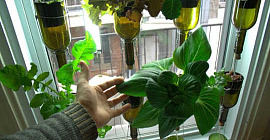

How Our Immune System Helps Us Fight Antibiotic Resistance
Wednesday, 05 May 2021 08:15While our immune system and antibiotics both do a great job of helping us fight life-threatening infections, the emergence of antibiotic resistance is quickly making it more difficult to cure...

15 Minutes of Intense Activity Can Improve Heart Health
Saturday, 01 May 2021 08:12High-intensity interval training (HIIT) workouts have become popular in recent years for a number of reasons. They don’t require as much time as a regular workout (some can take as little as 10...

Why The Humble Legume Could Be The Answer To Fertiliser Addiction
Tuesday, 27 April 2021 08:56Peas, lentils, chickpeas, beans and peanuts: if it comes in a pod then chances are it’s a legume. These unassuming food crops have a special ability that makes them fairly unique in the plant...

The Science Behind Junk Food Addiction and the Global Obesity Crisis
Wednesday, 26 July 2023 17:18Do you know why junk food is so addictive? Are you craving sweets yet? If you've ever wondered why junk food can be so addictive, you're not alone.

What Actually Is Catnip and Is It Safe For My Cat?
Monday, 24 May 2021 08:28There are many valid theories to explain the global appeal of cats, including our obsession with watching videos of them online. In terms of cats’ pure entertainment value, however, our...

Baby Bees Love Carbs – Here's Why That Matters
Tuesday, 20 April 2021 08:05Wild bees are essential for sustaining the landscapes we love. A healthy community of wild pollinators ensures that most flowering plants have an A-team pollinator species and a reserve bench of...


